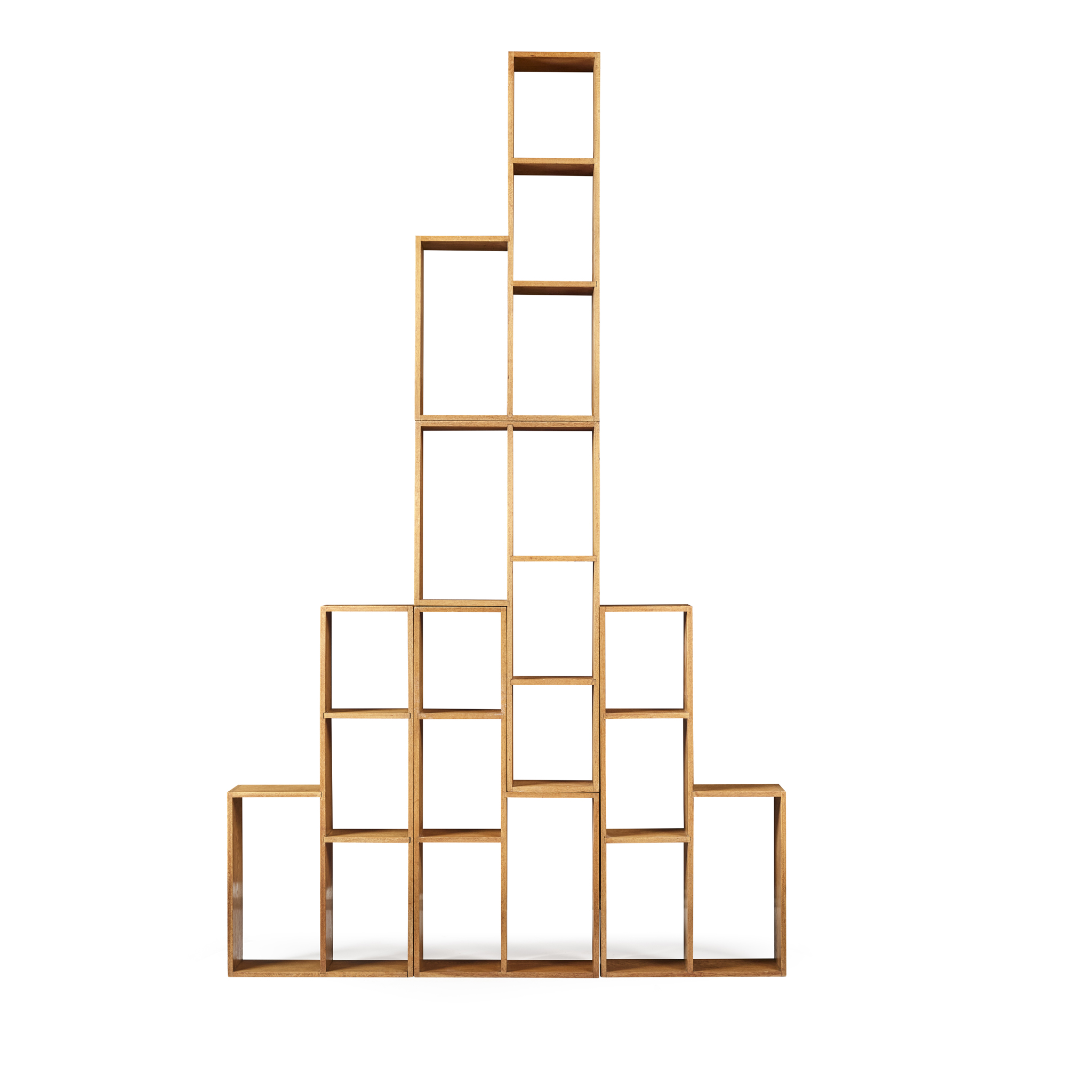GERALD SUMMERS (BRITISH 1899-1967) FOR THE MAKERS OF SIMPLE FURNITURE
SET OF FIVE MODULAR BOOK UNITS, CIRCA 1934
Estimate: £6,000 - £8,000
Auction: 19 March 2025 from 10:00 BST
Description
oak (5)
Dimensions
each 101.5cm high, 50.5cm wide, 22.5cm deep (39 ¾in high, 20in wide, 9in deep)
Provenance
Estate of Jessie Ball
Sotheby's, London The Best of British - Design from the 19th and 20th Centuries - Paul Reeves: The Auction, 20 March 2008, Lot 126
Footnote
Literature: Deese, M. ‘Gerald Summers and Makers of Simple Furniture’, Journal of Design History, vol. 5, no. 3, 1992, p.190 (catalogue page from late 1934 illustrated showing the book units)
Deese, M. Gerald Summers & Marjorie Butcher, Makers of Simple Furniture 1931-1940, Berlin, 2024, pp. 67-69, 175, 300
These book units were registered as design No. 796529 and described as ‘A simple and flexible system of providing accommodation for books, stores and articles of display’. They were available in Empire Whitewood polished white, black, oak, mahogany or walnut colour and retailed at £1 10 per unit or in birch white polished retailing at £3 30 per unit.
Order lists in the firm’s archive show that by 1937 the units were available in London department stores - Barkers, Harrods, John Lewis, and Whiteley’s; and at the furnishers Heal’s and Bowmans (in addition to Makers of Simple Furniture’s own showroom).
Martha Deese in her 2024 book notes that Gerald and his wife Marjorie organized a clever marketing campaign for the units that targeted members of the Left Book Club (p. 175):
"In early or mid-1936, they embarked on a direct mail campaign targeted at a specific group of potential customers: members of the Left Book Club (L.B.C.). Conceived in January 1936, the L.B.C. vowed “to help in the terribly urgent struggle for World Peace & a better economic order & against Fascism, by giving (to all who are determined to play their part) such knowledge as will immensely increase their efficiency.” The club’s first advertisement for members, in February 1936, led to the enrollment of over six thousand people, each of whom as a condition of membership agreed to purchase every month, for a minimum of six months, a book chosen by the club’s leadership to enlighten and embolden its members. Whether or not Gerald and Marjorie belonged to the L.B.C., they recognized that a fast-growing group of forward-thinking individuals in possession of an ever-increasing number of books were ideal candidates for the book units. Within a few months of the club’s establishment, the Charlotte Street office posted custom packets to the club’s leaders. The contents consisted of a sales pitch (in the form of a letter), a spec sheet for the book units, and an order form cleverly encased in a red-orange folder that mimicked the distinctive orange, cloth-bound covers of the L.B.C.’s publications. “May we interest you in our Book Units for your L.B.C. and other books?” the letter queried. “As they are the most flexible units in existence we think they will have a special appeal for you.” The advantages of the units over other shelving systems — the adaptable form, the different shelf heights, and the capacity of sixty books per unit — took up the body of the letter. The sales pitch concluded with an appeal to both the purse and the psyche. “Built-in bookshelves are always a false economy; you cannot take them with you when you move. And, it is pleasant to re-arrange your room sometimes and enjoy the fresh surroundings.”
Lyon & Turnbull wishes to thank Martha Deese for her assistance with cataloguing this lot.

